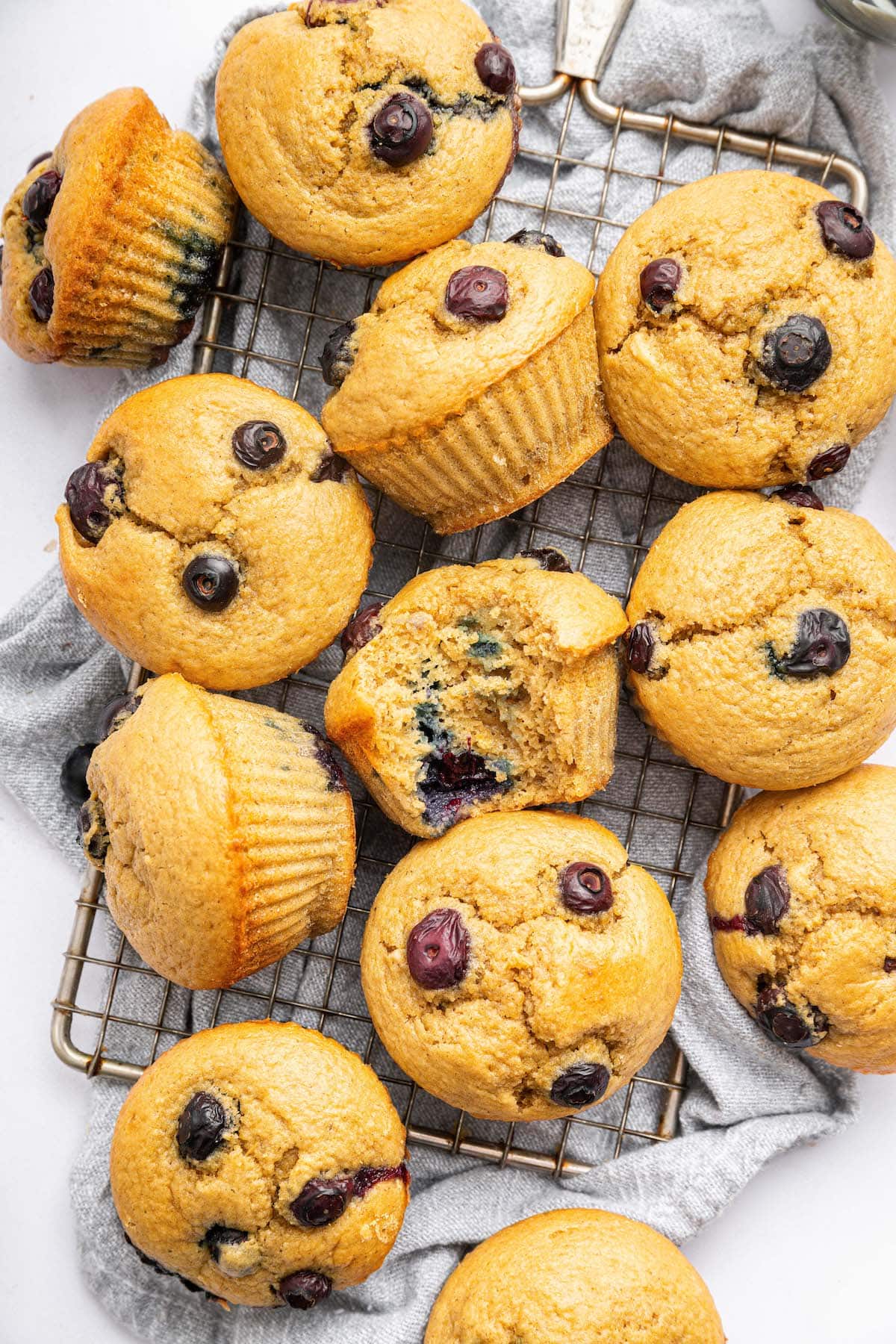Have you ever found yourself inexplicably craving a juicy burger, a slice of decadent chocolate cake, or a salty bag of potato chips, even when you’re not particularly hungry? Food cravings can be powerful and intriguing phenomena that leave many of us wondering why we yearn for specific foods. In this article, we’ll demystify the science and psychology behind food cravings, exploring the various factors that contribute to these irresistible desires.
What Are Food Cravings?
Defining Food Cravings vs. Hunger
Before delving into the complexities of food cravings, let’s distinguish them from ordinary hunger. Hunger is the body’s physiological response to a need for sustenance. It’s a sensation that gradually develops over time and can be satisfied with a variety of foods. In contrast, food cravings are intense desires for specific foods, often rich in taste and texture, that may or may not be linked to actual hunger. These cravings can feel urgent and compelling, driving us to seek out a particular food, even when we don’t need it for sustenance.
The Psychology of Food Cravings
Cravings are not merely random whims; they are often rooted in our emotions, stress levels, and even nostalgic memories. These psychological factors can trigger strong desires for specific foods. Additionally, external influences, such as advertising and cultural norms, play a significant role in shaping our food desires. Advertisements frequently associate happiness, success, and celebration with certain foods, making us more likely to crave them during special occasions or even everyday life.
The Physiology of Food Cravings
The physiological mechanisms behind food cravings are complex and involve brain chemistry and hormones. One key player is dopamine, a neurotransmitter associated with pleasure and reward. When we consume foods we crave, dopamine is released, reinforcing our desire for those specific foods. This reward system is part of what makes cravings so compelling. The mere anticipation of indulging in that coveted treat triggers the release of dopamine, creating a sensation of intense pleasure. This surge of dopamine not only satisfies our immediate desire but also reinforces our longing for those specific foods. It’s this very reward system that makes cravings so undeniably compelling, as our brains learn to associate the consumption of certain foods with feelings of satisfaction and delight.
Cravings and Health
Indulging in cravings too frequently can have consequences for our health. Consuming high-calorie, low-nutrient foods can lead to weight gain, nutrient imbalances, and various health issues. Therefore, managing cravings in a healthy manner is crucial.
Decoding Specific Food Cravings
Now, let’s focus on specific foods and what their cravings might indicate:
Chocolate Cravings
Chocolate cravings are perhaps one of the most common and intriguing. While some people chalk it all up to a sweet tooth, there might be more to it. Chocolate is rich in magnesium, and a strong desire for it could signal a deficiency in this essential mineral. Magnesium is involved in various bodily functions, including muscle function, nerve function, and energy production. So, if you find yourself yearning for chocolate, it might be your body’s way of telling you it needs more magnesium.
Salty Snack Cravings
Cravings for salty snacks like potato chips or pretzels might be related to sodium balance in the body. Sodium is a critical electrolyte involved in maintaining fluid balance and nerve function.
However, it’s important to note that true sodium deficiencies are quite rare. In fact, the opposite is often the case, with excess sodium intake being more common, especially in developed regions. Therefore, it’s important to consume salt in moderation, as excessive sodium intake can lead to high blood pressure and other health issues.
Sudden cravings for salty snacks like potato chips or pretzels often signal stress and comfort eating habits. Regularly consuming high-sodium foods may also result in developing a preference for salty flavors, potentially leading to salt cravings even when extra sodium intake is unnecessary and potentially harmful to your health. It’s crucial to strike a balance in your salt consumption, ideally by addressing your stress and consuming plenty of potassium-rich foods to maintain a healthy sodium-potassium equilibrium in your body.
Sugar Cravings
Sugar cravings are incredibly common, especially when we’re feeling tired or stressed. These cravings may be linked to fluctuations in blood sugar levels. When blood sugar levels drop, our bodies crave quick sources of energy, such as sugary foods. However, the energy spike provided by sugar is often short-lived and followed by a crash, leaving us craving more. To manage sugar cravings, we recommend opting for healthier sources of sugar, like fruit, which provide more sustained energy.
Red Meat Cravings
Craving red meat, such as a juicy steak, could be a sign of an iron deficiency. Red meat is an excellent source of heme iron, which is easily absorbed by the body. When iron levels are low, our bodies may signal us to consume more red meat to meet this essential nutrient requirement. However, it’s essential to explore other dietary sources of iron, such as beans, lentils, and leafy greens, to ensure a balanced diet and to get tested to verify one’s actual iron levels and requirements.
Dairy Cravings
Cravings for dairy products like cheese or ice cream may be related to a calcium deficiency. Dairy is a primary source of calcium, which is crucial for strong bones and teeth, as well as various bodily functions. If you constantly crave dairy, it might be worth considering if you’re meeting your calcium needs. These cravings may also be linked to the soothing and comforting qualities that dairy offers. Dairy products, with their creamy textures and rich flavors, have a way of providing a sense of comfort and indulgence that goes beyond simple nourishment.
Strategies for Managing Food Cravings
Regardless of the specific cravings, managing them in a healthy way is key to overall well-being. Here are some practical strategies:
Mindful Eating
Practice mindful eating by paying close attention to your body’s hunger and fullness cues. This can help you differentiate between genuine hunger and emotional cravings.
As you sit down to eat, take a moment to appreciate the appearance, texture, and aroma of your food. Begin with serving an appropriate portion size and resist the temptation to overload your plate, encouraging portion control.
Slow down your eating pace, savoring each bite by chewing thoroughly and putting your utensils down between mouthfuls to prevent rushing through your meal. Throughout your dining experience, remain attuned to your body’s hunger and fullness cues, distinguishing between genuine physical hunger and emotional triggers. Pay close attention to the taste and texture of each bite, noting the flavors as they unfold in your mouth.
Mindful eating also entails a reflection on your emotions during the meal. Are you eating for comfort or out of boredom? Recognizing these emotions can help you address any emotional eating patterns. Express gratitude for your meal, acknowledging the effort that went into its preparation and the nourishment it provides your body.
Furthermore, trust your body’s signals to stop eating when you feel comfortably satisfied, rather than overly full, and remember that you can save the rest for later. Regular practice is key to mastering mindful eating, so start with one meal a day and gradually expand your mindfulness to other meals.
Plan Meals
Plan balanced meals and snacks throughout the day to maintain stable blood sugar levels and reduce the likelihood of intense cravings.
Consider including healthy proteins and fats, and a variety of fiber rich carbohydrates in your menu. Fruits and vegetables are packed with fiber, adding volume to your dishes and helping you feel more satisfied, all while providing an extensive range of nutrients that support your overall health.
Another key aspect of meal planning is spacing out your meals and snacks strategically throughout the day. This approach helps maintain consistent energy levels, preventing the energy crashes that often trigger cravings. By ensuring you have a nourishing snack or meal within a few hours of your last one, you can avoid the extremes of hunger that can lead to impulsive, less healthy food choices.
Healthy Alternatives
When a craving strikes, consider healthier alternatives. Instead of potato chips, try air-popped popcorn for a satisfying crunch with fewer calories. Opt for dark chocolate over milk chocolate; it’s rich in antioxidants. Replace sugary soda with sparkling water with a hint of citrus. Swap carb-heavy pasta for spiralized zucchini or cauliflower rice as a lower-carb alternative. These choices satisfy cravings while supporting a healthier lifestyle.
Restful Sleep
Portion Control
If you choose to indulge in a craving, practice portion control. Instead of giving in to the temptation of consuming an entire bag of chips or a full chocolate bar, consider these practical steps. Begin by dividing your indulgence into smaller servings, helping you satisfy the craving while avoiding overconsumption. Opt for smaller plates and bowls, which can trick your brain into feeling more satisfied with less food. Pre-portion snacks into smaller containers to set clear limits on how much you can consume. Establish guidelines for portion sizes, especially for high-calorie or high-sugar treats. Stay hydrated to differentiate between hunger and thirst, and keep tempting snacks out of immediate sight. Plan ahead for challenging situations, track your intake, and remember that enjoying treats in moderation is a sustainable approach to managing cravings while maintaining a balanced diet.
Supplemental Support
Supplements have also garnered attention for their potential role in assisting individuals with managing cravings and supporting healthier eating habits, we’ll discuss a few of these below.
Gymnema sylvestre, an herb native to India, contains active components with anti diabetic properties and may help reduce the taste of sweetness, potentially curbing cravings for sugary foods. Chromium, an essential mineral, is thought to aid in regulating blood sugar levels. Studies show that chromium supplementation can reduce insulin resistance, potentially reducing cravings for carbohydrates and sweets. Glutamine, an amino acid, plays a role in supporting gut health and may help reduce cravings for sugar by providing improving glycemic control. While these supplements show promise in managing cravings, it’s important to approach their use with caution and under the guidance of a healthcare professional.
Food cravings are a fascinating aspect of our relationship with food, driven by a complex interplay of psychology and physiology. These intense desires for specific foods often go beyond mere hunger and can be influenced by emotional factors, stress, and cultural norms. Understanding the mechanisms behind cravings, such as the role of dopamine in our reward system, sheds light on why they can feel so compelling.
While indulging in cravings occasionally is a part of life’s pleasures, it’s crucial to do so mindfully and with an eye on your overall health. Decoding the meaning behind specific cravings can help you address potential nutrient deficiencies or emotional triggers.
To manage food cravings effectively, embrace strategies like mindful eating, managing stress, meal planning, and opting for healthier alternatives. These practices can help you strike a balance between satisfying your cravings and maintaining a nutritious diet. Remember that moderation and portion control are your allies in this journey towards healthier eating habits. By making conscious choices and listening to your body’s signals, you can navigate the world of cravings while promoting your well-being. So, the next time you find yourself yearning for that decadent treat, you’ll be equipped with the knowledge and tools to make choices that align with your health goals.
Publisher: Source link



